Planting periwinkle in open ground
The plant will delight us with its beauty only if we take responsibility for its settlement in the garden.
When is the best time to plant
Any cloudy day from late April to early October. The deadline is a month and a half before stable autumn frosts. In spring, in case of cold weather, it is advisable to cover the plantings with lutrasil in 2-3 layers.
Preparing for planting a plant
Before the main procedure, be sure to:
- we determine the condition of the seedlings and the type of containers in which they are stored;
- we choose a place for landing and its method.
And now about everything in more detail.
Planting material
A good periwinkle seedling should have:
- healthy (without curvatures, splits and spots) stems (preferably 3-4 pieces) with leaves of the color corresponding to the variety;
- whole roots of the same color. If the root system is in the substrate, then to examine it, the latter can be washed off with water. Damaged, rotten or too dark (i.e. old) roots should be trimmed with pruning shears or scissors. It is not required to process the sections with any preparations.
Landing capacity
Any one will do
However, it is important to remember that peat cups:
- decompose in the soil, and therefore it is not necessary to remove them from the plant;
- acidify the soil, which, therefore, will have to add 1.5 times more alkalizing agent (ash, etc.).
Honeycombs made of thin paper can also be left on the seedling, but not made of cardboard - in no case!
Soil selection
A good place for planting periwinkle will be a half-shaded area (ideal is a near-stem circle of cherries, pears, apple trees) with soil:
- light (sandy loam);
- fertile (30-50% humus);
- well-drained (groundwater level - 40 cm and below);
- having a neutral reaction (pH = 7).
It should not be forgotten that coniferous litter, like peat, strongly acidifies the soil.
Planting method
Two schemes are possible:
- Saplings are placed every 20-30 cm. As they grow, they will have to be thinned out (usually once a year).
- The spacing between the bushes is determined depending on their variety. For example, if an adult plant covers an area of 60 × 60 cm, then young specimens should be planted at a distance of 120 cm from each other.
There is a single standard for both options: 1 hole = 1 seedling.
Instructions for planting periwinkle in open ground
Work algorithm:
We dig a landing hole (30 × 30 cm) in the right place on the site.
We spill the seedling substrate with water, and after one or two minutes we remove the plant from the planting container (we cut the cardboard or plastic packaging with scissors).
We place the root system of the seedling in the center of the hole, carefully cover it with the substrate, crush it with our hands and water it (5–7 liters per bush).
We mulch the bush with foliage or gravel (layer thickness 5–10 cm, coverage area 60–80 cm2) and shade it with a cardboard box for a week.
I mulch my periwinkles with ash leaves - when they dry, they acquire an elegant light brown color.
Characteristic features of periwinkle
Periwinkle is a flower that belongs to bush or herbaceous species with upright erect shoots. The foliage is dense, leathery, it can be of various shades of green, the leaves on the stem are located opposite each other. Occasionally, the color of the leaves may be slightly mottled or have a creamy finish around the edge. Vinca flowers are solitary, relatively large in diameter. The most common flowers are blue, but the color range can range from white to purple. The flower itself is funnel-shaped and has a long cylindrical tube. The peak of flowering falls in the spring period of the year, it is at this time that the periwinkle becomes the most attractive, because the corolla of the plant is drawn to the sun, rising upward. Even when most of the specimens lose their attractiveness and wither, the flowering period for the plant does not end, since some flowers continue their active life throughout the growing season.

Blooming periwinkle
Periwinkle bears fruit with leaflets (2 pcs.) In the form of a cylinder.Under natural conditions of growth, there are about twelve species of this plant.
Periwinkle in room conditions
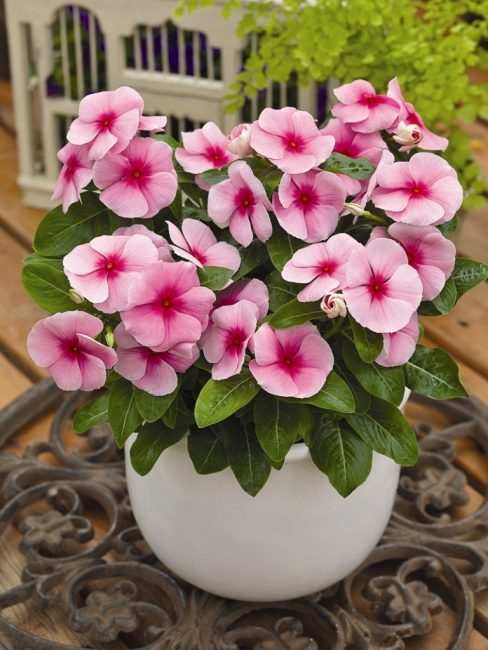
Periwinkles planted in pots and pots require more attention than street counterparts
Requirements for caring for a room instance:
- This plant does not have any special requirements for the soil. It should be well-drained with an admixture of peat. From commercially available substrates, you can use a mixture for geranium.
- Periwinkle is a moisture-loving flower. You need to water it about every other day, as the substrate dries. At the same time, moisture stagnation should not be allowed. The water spilled from the drainage hole into the sump must be drained. In winter, watering should be less than 1-2 times a week.
- For full development, the air of the room where the flower stands must be humid. It is good if there is an aquarium next to it. The plant itself must be periodically sprayed, and the leaves should be wiped with a damp cloth.
- The plant does not need much light. Direct sunlight can burn foliage. Lighting should be diffused.
- The temperature is optimal from 18 degrees in winter to 25 degrees in summer.
- Vinca does not like wind and drafts. She especially will not like the winter airings.
- Top dressing is carried out with an interval of 2 weeks. You can use both organic and mineral fertilizers. Of those sold in flower shops, preference is given to a liquid mixture for indoor roses. In winter, the plant has a time of suspended animation. At this time, you do not need to feed him.
- If the tops of the branches are cut off, they will begin to give side shoots. This will make the shrub lush and more decorative.

In a hanging planter
Signs of inadequate care and how to deal with:
- The leaves turn yellow and dry - it means that the temperature and irrigation regime is not observed. This is observed when the room temperature is above 25 degrees, and with an insufficient amount of incoming moisture. It is worth correcting the situation, removing the dried leaves and the bush will come to life.
- The buds are not formed or there are very few of them, it indicates that the plant is cold, it is standing in a draft, or feeding is not carried out correctly. During flowering, nitrogen supply should be limited. Move the pot to a more comfortable place.
- The buds grow and fall - signals a lack of light and watering. It is necessary to correct the situation and the bush will pick up color.
- The edges of the leaves dry out when the air is not humidified enough. It is necessary to carry out the spraying procedure more often.

Potted vinca needs replanting
The signal will be the roots peeking out of the drainage holes. It is advisable to select the same soil mixture in which it grew before. When transplanting, the bush can be divided.
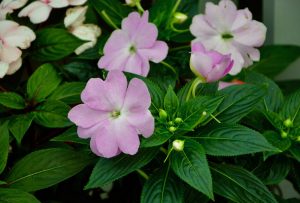
Balsam - decoration of the lower tier: description, varieties, planting and care recommendations (60 Photos & Videos) + Reviews
Description of the plant
Periwinkle is a perennial plant that can be deciduous or evergreen. The genus is represented by shrubs and herbaceous plants. Belongs to the Kutrov family. It consists of 12 species, in temperate climates only 4. One of the species of periwinkle Katarantus was bred by scientists into a separate genus.

Wild specimens can be found in North Africa and the Eurasian continent
Periwinkle is called differently:
- Official botanical name - Vinca
- Popular names: brilliant green, burial ground, coffin-grass, devil's eye, joy of the earth, sorcerer's violet, gentian and others
Its leaves are leathery, colored in various shades of green. They may have blotches of a lighter tone or a border around the edge. They are located opposite.
The peduncle has one flower. The color is most often blue, but there are pink and lilac flowers. They consist of 5 petals.
Abundant flowering occurs in early spring. No wonder he is considered a harbinger of spring. Periwinkle has a big plus: its single flowers continue to bloom until autumn. The fruit ripens in the form of a pair of leaflets.
The healing properties of periwinkle
Periwinkle is an extremely useful plant, which is why it has been used for a long time both in pharmacology and in medicine. The fact is that this plant contains an alkaloid that is able to prevent cell division. To date, the industrial cultivation of such a culture has been discontinued, since this alkaloid has been learned to synthesize artificially. It is a part of immunosuppressants and antineoplastic agents. However, despite this, periwinkle is medicinal and today is widely used during the treatment of various cardiovascular diseases:
- The pubescent periwinkle contains glycosides called pubescin and vinine, which help lower blood pressure.
- Periwinkle pink contains the alkaloid reserpine, which is quite valuable. It also helps lower blood pressure.
- The herbaceous periwinkle contains rutin, and it is often prescribed by doctors for hypertension.
The periwinkle also contains glycosides. In addition, some species contain ursolic acid and other active substances.
In addition to alkaloids, periwinkle contains tannins, anthocyanins, organic acids, sugars, vitamins, mineral salts, steroids and phenolic compounds. Means made on the basis of this plant are used in the treatment of diseases such as: cerebrovascular accident, osteochondrosis, ischemia, atherosclerosis, vascular lesions, psychosis, schizophrenia, depression, autonomic neurosis, polyneuritis, movement coordination disorder, the consequences of meningoencephalitis, and even complex diseases of the ears, throat, nose - sensorineural hearing loss, ototoxic neuritis, vasomotor rhinitis, decreased sense of smell, postinfluenza neuritis of the auditory nerve, atrophic rhinopharyngolaryngitis.
In alternative medicine, such a plant began to be used in the days of Dioscorides and Pliny the Elder. For example, catharanthus in China has been used to treat hypertension. In the Caucasus, the periwinkle species growing there are distinguished by antimicrobial, vasodilating, blood-purifying, fixing, wound-healing and hemostatic effect. This plant was used to treat colic, toothache or headache, sexual weakness, diabetes mellitus, female diseases, scurvy, bad breath, fever, tuberculosis, colds, etc. It was also used externally for bleeding of the uterus or from the nose, for lotions for itching, rashes and skin eczema, as well as wounds.
Periwinkle Healing properties
Contraindications
Periwinkle is considered a poisonous plant, therefore it is forbidden to treat it on its own. Before you start taking medications from such a plant, you should consult with a specialist. The fact is that with an overdose, inhibition of cardiac activity is observed. The use of such funds is prohibited for pregnant women, and at any time.
Care
Periwinkle is an undemanding bush. Planting and caring for it outdoors is a little hassle. The correct approach to cultivation does not allow you to destroy the plant and make it even more attractive:
It is imperative to add organic matter and minerals for lush flowering. The fertilizer is changed, starting with nitrogen for the growth of green parts, then phosphorus and potassium until bud formation and flowering.
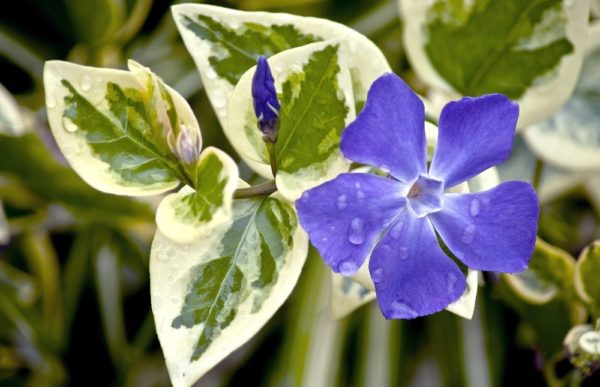
Compost is brought in in the fall.
Moistening is carried out if the soil begins to crack on the hottest days.
To create a more decorative look, beautiful bushes, periwinkle are pruned, slightly shortening the branches and removing faded and dried parts. By eradicating excess shoots, you will prevent expansion in breadth, into the territory of other plants.
Some species require shelter for the winter.
Pay attention! Periwinkle is an early plant, therefore it loves moist soil. But not flooded.
Orchid pests: what are there, ways to deal with them, photo
Planting site, soil
If we talk about such a useful plant as periwinkle, planting and care in the open field does not require significant effort. This flower thrives on both sunny and shady areas.
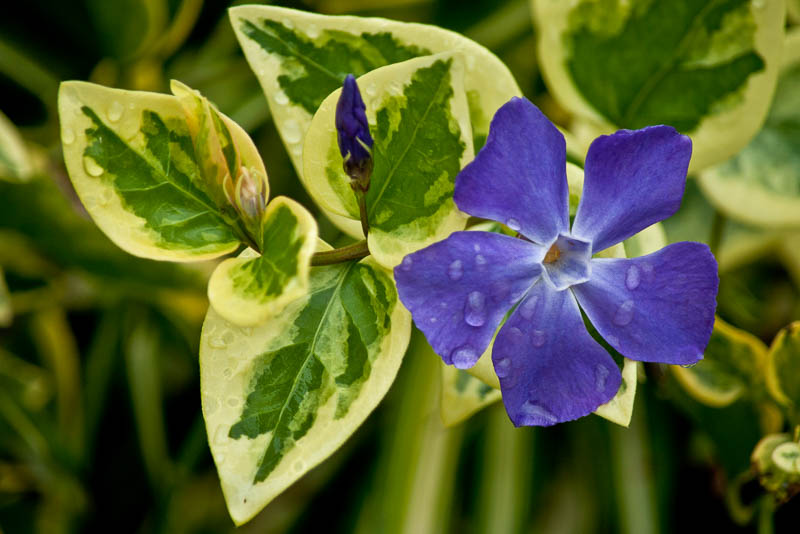
Variegated (variegated)
For planting, you can choose a shaded place, for example, under the crowns of tall trees, because direct sunlight can burn leaves and petals. Periwinkle should be planted in fertile, loose soil with good drainage. Slightly acidic or neutral soil is ideal - the pH level should not exceed the 6 mark.
You cannot plant this flower in heavy and dense clay soil. Places where groundwater is close to the surface of the earth are not suitable for planting: the roots of the flower can rot.
The substrate must be prepared from equal parts of humus, sand, peat and turf. It is necessary to add fertilizers: nitrogen, phosphorus, compost or manure. This stimulates the growth of roots and branches and provides the plant with nutrients.
Interesting fact! In ancient times, periwinkle was considered a magical flower. It was called the flower of love, coffin grass, burial ground and witch's or witch's violet.
Seed planting
Seed propagation is an extremely time-consuming and laborious process. It is necessary to fertilize and loosen the soil on a shaded plot of land, put drainage on the bottom (crushed stone, sand, expanded clay) and prepare the seeds.
How to sow seeds:
- When digging up a bed, add a little compost to the soil.
- On the site, make thin grooves 1 cm deep.
- Sow each seed, sprinkle lightly with soil and water.
Periwinkle seeds can be propagated in spring or autumn. To do this in the summer, you need to choose a cloudy day for sowing. The plant will bloom only next year.
With this method, not all seeds sprout, so most gardeners propagate periwinkle by cuttings.
Interesting fact! Periwinkle is a perennial and very hardy flower, therefore many popular beliefs are associated with it. It is considered a symbol of love and memory, which is why it is often planted in cemeteries.
Planting seedlings
Many growers grow periwinkle from seeds in greenhouses or in a box in an apartment. When warm weather sets in and strong seedlings with a good root system appear, they are transplanted into open ground.
It is very convenient to propagate the plant by cuttings. Periwinkle creeps along the ground, so in some places the branches release roots. You need to cut off the stalk and dig it into the ground. Soon it will take root. Seedlings and cuttings should be planted in an area of 20 × 20 cm. The flower should be planted in spring or late autumn.
Planting and breeding
Just like all perennial plants, periwinkle can be propagated in several ways, each of which depends on the season, as well as planting conditions: soil, weather conditions, the presence of a certain place for planting.
So, there are 4 ways to breed this culture:
- seeds;
- dividing the bush part;
- by diversion;
- by cuttings.
Today, experienced owners often use the division of the bush.
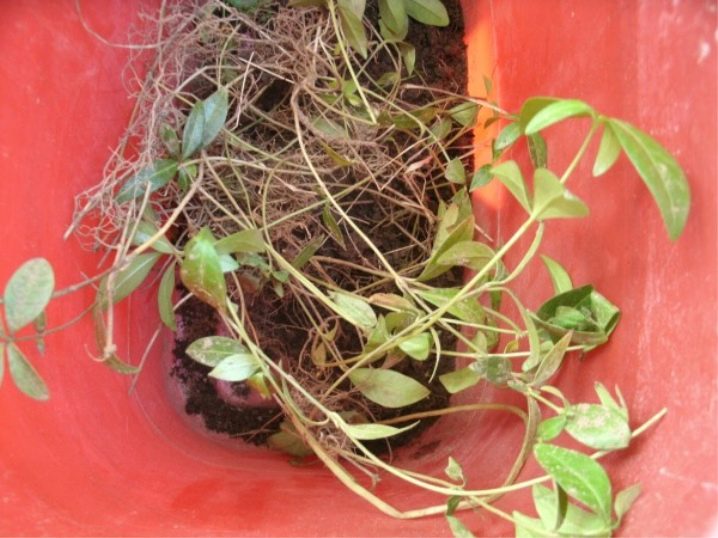
In this case, a certain part of the plant is separated from the rest of the bush (along with part of the root system). The separation and planting itself should be carried out in the spring or in the first months of autumn. The plant will need a lot of moisture to grow successfully.
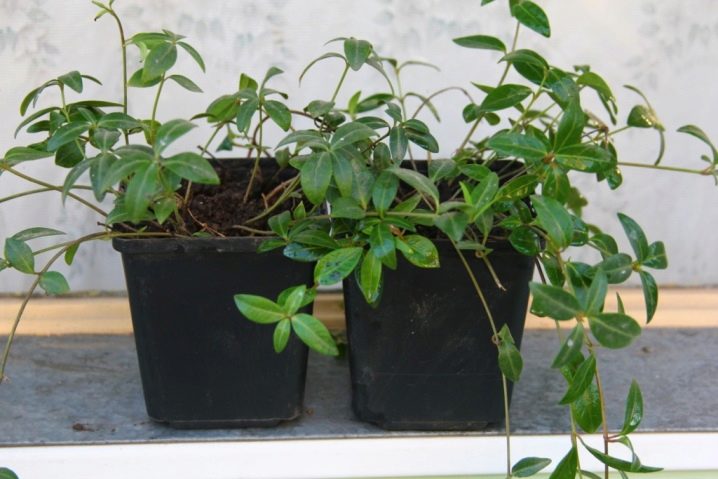
Cuttings are also a fairly popular breeding method for periwinkle. In this case, young shoots of the plant are separated or cut off from the main bush and buried in a separate place with the same soil and moisture level. When planting, only the sheet part should be left on the surface, the entire base should be in the ground.

Breeding propagation is much less popular, since this procedure requires free space around the plant. The twig should be bent to the ground and covered with earth.In this case, you should wait for at least partial rooting of the shoot, then separate it from the bush part and plant it in a designated and prepared place (the method resembles the way of propagation of ordinary strawberries).
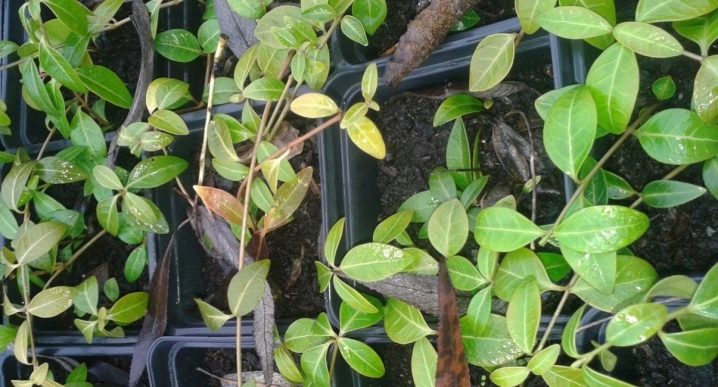
The seeds of the plant should be monitored much more carefully. The planting process itself should be carried out in the spring; shallow wooden or polymer boxes are best suited for this. Place the seeds in the soil to a depth of no more than 2-3 cm, then cover with an impenetrable film or cloth (a strictly defined microclimate should be created). This option is suitable for growing periwinkle only at home (up to 22-23 degrees Celsius). Be sure to water the plant occasionally and ventilate the first shoots to keep them viable.
After the first seedlings germinate, remove the film and expose the pot to the sun.
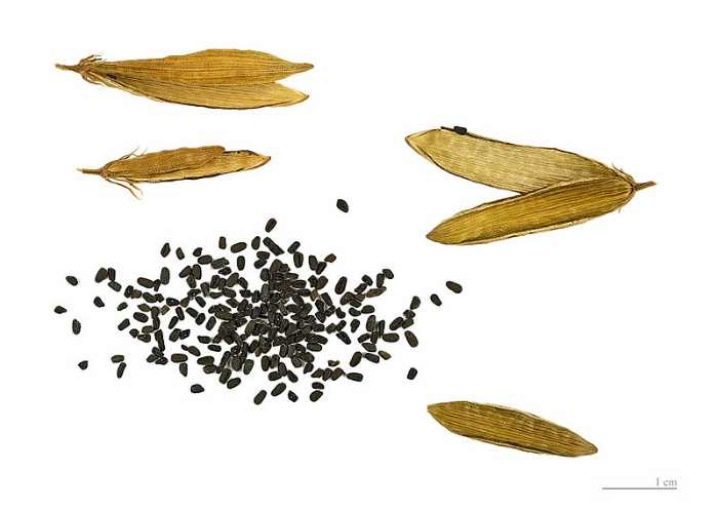
Diseases and pests
Periwinkle is practically not subject to the negative influence of the external environment, it is one of the most resistant to adversity plants, which is not afraid of fogs, hypothermia, or rotting of the root system and can grow both in the south and in the Urals. The only enemy of the gardener on the way to growing beautiful periwinkle flowers can be insect pests such as aphids or scale insects.
To get rid of pests, it is enough to treat the bushes of the plant with soapy water. To do this, mix 1 tablespoon of baking soda with ¼ of an ordinary bar of soap, pour a liter of hot water and stir thoroughly until they are completely dissolved. After the composition has cooled to room temperature, simply spray the leaves of the plant with it.
Despite the unpretentiousness of the periwinkle to the external environment, try to avoid waterlogging of the soil - even with such juicy leaves and always fresh and bright flowers, it does not need a lot of moisture.
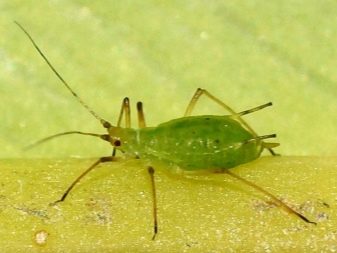
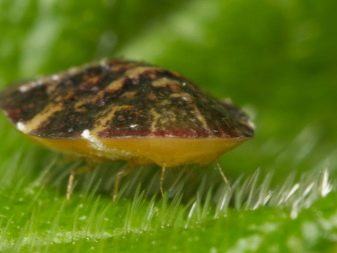
How to care for a flower, see below.
How to take care of it properly?
Caring for the Thunberg barberry Atropurpurea Nana is not difficult and does not take much time.
- Watering the plant needs periodic, since it tolerates drought well. In hot weather, it is enough to water the bush once every 10 days, but the amount of liquid should be voluminous, water is brought under the root. Seedlings should be watered every evening.
- Top dressing in the first year is applied in the spring, organic is used. Adult barberries are fertilized three times per season: in early spring (nitrogen-containing fertilizing), in autumn (potassium-phosphorus) and before winter (organics diluted with water, at the root).
- Pruning is done mainly in May and June. During the procedure, dry and weak branches are removed, the bush is thinned out. The shape given to the plant should be maintained every year.
- Preparation for wintering consists in mulching with straw or peat. In colder regions, the bushes are covered with spruce branches. Tall bushes are tied with a rope, a frame is made from a mesh and dry foliage is poured inside. The top is covered with agrofibre or other similar material.
Adult bushes (over 5 years old) do not need shelter for the winter, even if the shoots freeze, they quickly recover. Thunberg barberry can be damaged by aphids, sawflies or moths. A solution of chlorophos or laundry soap is used against them. From diseases, bushes can be affected by spotting, powdery mildew or rust. Treatment consists in removing diseased parts and treating the plant with fungicides.
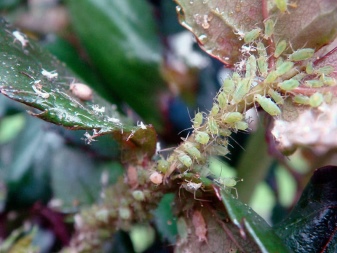
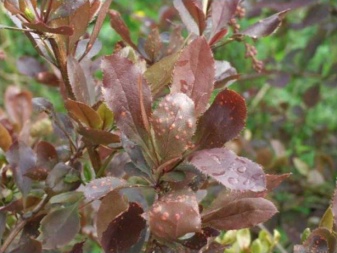
Use in landscape design
Decorative qualities and moderate requirements allowed the dwarf shrub to become a favorite flower for designers. The plant can be found in personal plots, in a city garden or park.
Mixing several types in one area helps to create a unique and colorful landscape. A uniform green blanket will hide the imperfections of the area, eliminate the need for planting additional flowers or shrubs.
Important! Periwinkle is an excellent solution to the problem of shaded areas, as it can be planted where the sun does not reach.
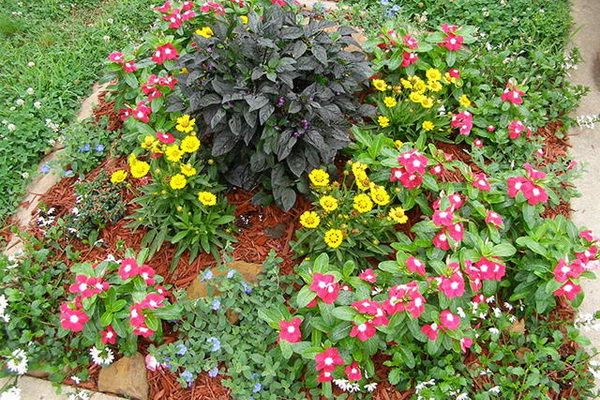
Periwinkle will fit into any landscape style
At what time of pregnancy is CTG performed and how is it done?
The procedure itself is absolutely painless, but it takes about 20-50 minutes in time, depending on the quality of the results obtained. All this time, a woman needs to be at rest and move as little as possible, so as not to provoke the fall of the sensors. And, perhaps, this is its only drawback.
Cardiotocography is performed using a special apparatus. It is a combination of a strain gauge, an ultrasonic sensor and an electronic cardiac monitor system. Of course, the first two are attached to the belly of the pregnant woman, while the latter allows you to directly record the heart rate, as well as uterine contractions, analyze them and give the finished result in the form of a long tape with graphs.
How to prepare for CTG? Just eat a little before the event and preferably something sweet. This will make the fetus move more actively. However, you should not go to extremes and overeat. Significant fluctuations in blood sugar levels can have the most negative effect on the result, however, as well as overexertion and stress. Therefore, it is undesirable to be nervous immediately at the time of the procedure.
When appointed
How long is CTG done? Doctors, in whom a woman is registered, prescribe cardiotocography from the 30th week of pregnancy. However, if there are no complaints and problems with the development of the fetus, it will be necessary to undergo diagnostics only after 32 weeks. In case of problems with the condition of the fetus, the procedure is prescribed earlier than 30 weeks, since it is required to assess the baby's heart rate and his physical activity.
When is CTG done during pregnancy? Usually, women in position are assigned such a diagnostic method several times during the entire period of gestation.
In case of identifying health problems, the doctor can prescribe a series of examinations to the patient in order to confirm or deny violations in the development of the crumbs.
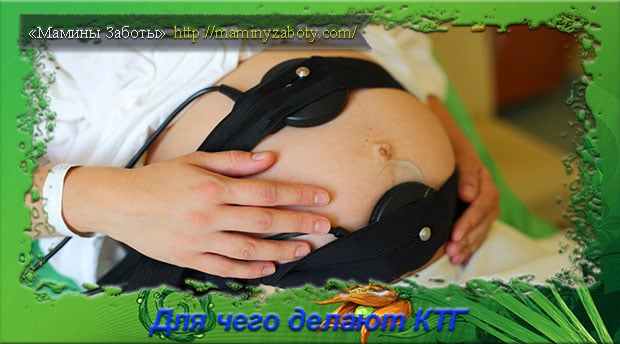
But, as you know, not only at the next visit to the gynecologist, this diagnosis is carried out. When is CTG done during pregnancy? The procedure is carried out during labor in order to assess the condition of the baby and the strength of the contractions.
Based on the indicators obtained, it is possible to decide how the birth will take place. If the child is weak, and the contractions are not strong, then it will be difficult for the baby to be born on his own. In this case, the pregnant woman undergoes a caesarean section.
What does CTG show during pregnancy? In addition, this diagnostic method helps to monitor babies in whom an ultrasound scan revealed an umbilical cord entanglement of the neck. Preparation for CTG is usually not carried out; a woman is only required to be present during it. After receiving the results, the CTG is deciphered.
Periwinkle: varieties and varieties
Periwinkle is an evergreen perennial that covers flower beds, ridges, slopes with a bright carpet. Unpretentious to maintain, this flower is equally loved by experienced landscape designers and novice gardeners. The leaves of the plant are as if covered with a waxy coating, dense and shiny. The inflorescence of pale purple, pale blue shades consists of five petals.
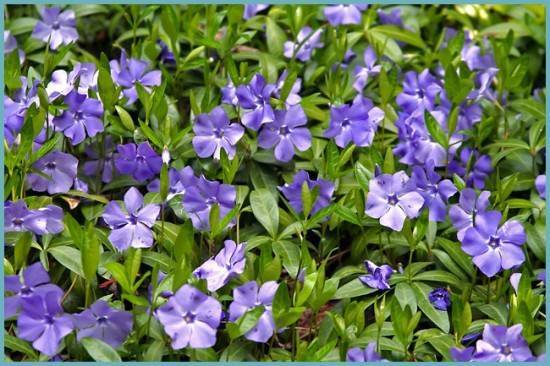 Even periwinkle foliage is a wonderful flower bed decoration.
Even periwinkle foliage is a wonderful flower bed decoration.
By planting a periwinkle in a flower garden, you can forever get rid of the need to fight weeds: growing rapidly, the flower completely covers the ground, rooting with shoots and does not give the weeds even the slightest opportunity for growth.
In the wild, there are only a few varieties of periwinkle (small, large, herbaceous, pubescent), but breeders have bred many of its varieties with flowers of various shades.
- Large periwinkle (or Vinca major) has larger leaves and flowers than that of small periwinkle, under favorable conditions it can bloom twice a year (in May and September), reaches up to 25 cm in height.The Reticulata and Variegata varieties, which are distinguished by the presence of yellow-white streaks on the leaves, are especially popular with designers.
Periwinkle large
- The herbaceous periwinkle (or Vinca herbacea) has low frost resistance, it can disappear for the winter. It differs in the shape of the leaves - they are ovoid, small, leathery, of a rich green hue.
Herbaceous periwinkle
- The pubescent periwinkle (Vinca pubescens) also sheds its leaves for the winter, but in general it is frost-resistant, only in extreme cold it needs additional care - shelter. Flowers are small, rising on shoots.
Pubescent periwinkle
- Small periwinkle (or Vinca minor) is a perennial with leathery elliptical leaves. Frost-resistant to temperatures down to -10 degrees, it can only be damaged in severe frosts. It has creeping stems reaching a length of 100 centimeters or more. Rooting of the plant occurs mainly at the end of summer. Inflorescences are small, blue.
Periwinkle
The following varieties of the lesser periwinkle have been bred:
- Alboplena - periwinkle with double white flowers;
- Argenteo-variegata - leaves are large, bright green with whitish-cream blotches, inflorescences of a pale blue hue;
- Atropurpurea - has a bright purple hue;
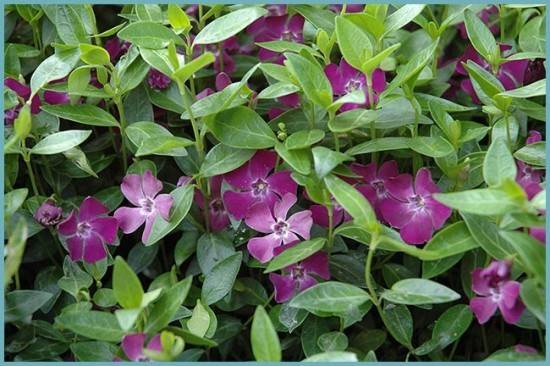 Atropurpurea cultivar
Atropurpurea cultivar
- Emily - just like Alboplena, it has white flowers;
- Bowles' Variety - blooms for a long period, flowers are deep blue.


